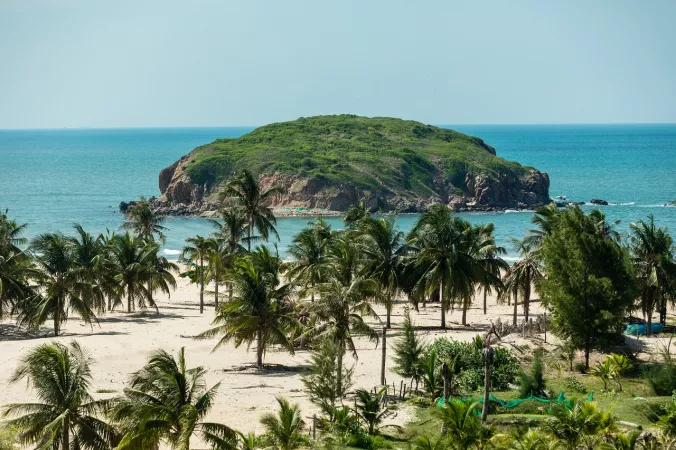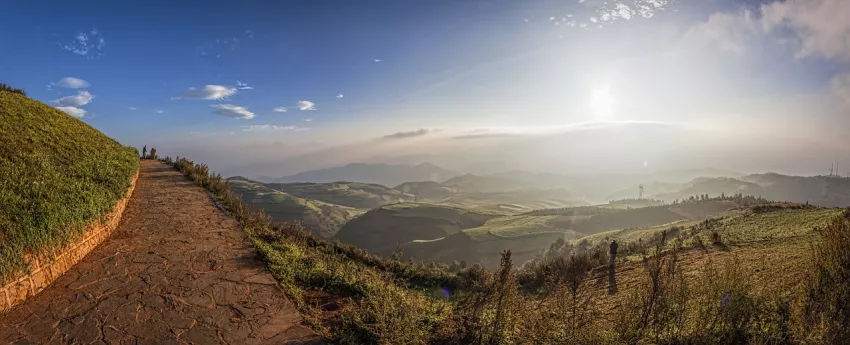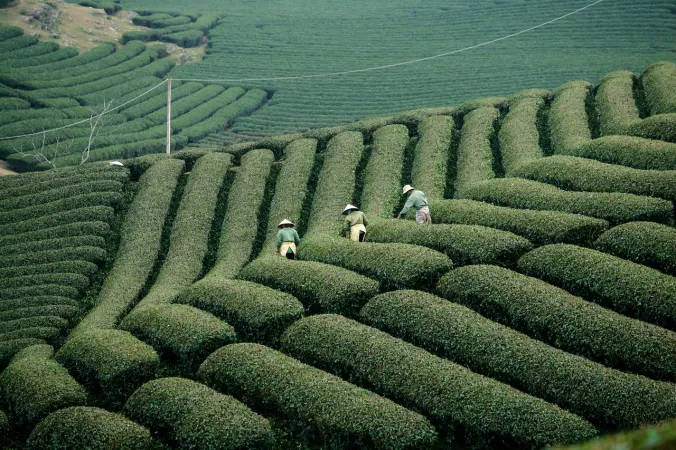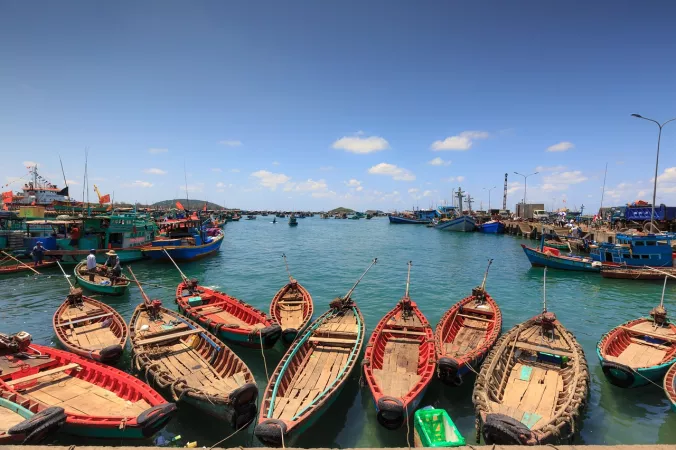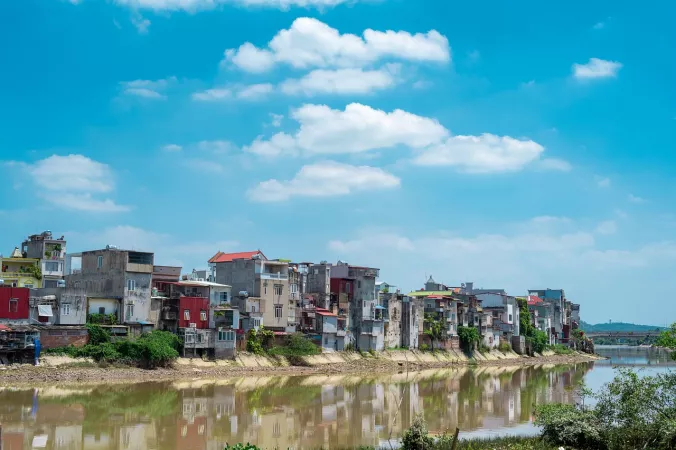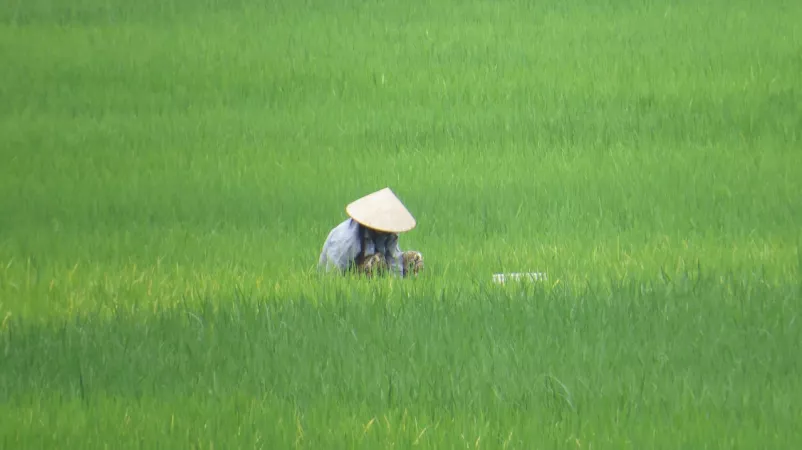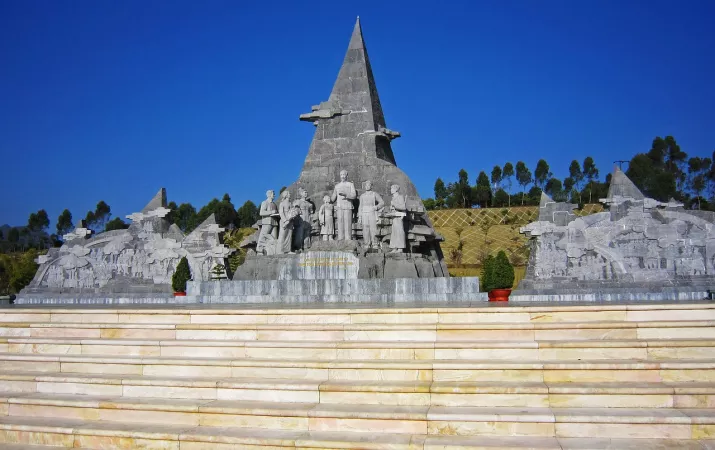
Lai Chau
Duration
3 to 5 Days
3 to 5 Days
Best time to visit
Mar-Apr, Oct
Mar-Apr, Oct
Theme
Hill Station, Adventure, Wildlife
Hill Station, Adventure, Wildlife
Lai Chau Travel Guide
Lai Chau, located in the northwest region of Vietnam, is a mountainous province known for its stunning landscapes and rich cultural heritage. The province is home to diverse ethnic groups, each with its own unique traditions and customs. Lai Chau is famous for its terraced rice fields, lush forests, and traditional villages, offering visitors a glimpse into the authentic rural life of Vietnam.Top Attractions in Lai Chau
- Hoang Lien National Park
- Sin Ho Market
- Thac Bac Waterfall
- Lung Cu Flag Tower
- Sapa Ancient Rock Field
Lai Chau is Famous for
Lai Chau is most famous for its breathtaking terraced rice fields and vibrant ethnic culture.Top Attractions in Lai Chau
- Exploring the terraced rice fields
- Visiting ethnic minority villages
- Trekking in the Hoang Lien National Park
- Shopping at the colorful markets
- Admiring the natural beauty of Thac Bac Waterfall
What's Great about Travelling to Lai Chau?
- Experience authentic rural life
- Immerse in diverse ethnic cultures
- Enjoy stunning mountainous landscapes
What's Not So Great about Travelling to Lai Chau?
- Limited modern amenities
- Rough and challenging terrain
- Language barriers with locals
Travel Tips for Lai Chau
- Observe local customs and traditions
- Prepare for varying weather conditions
- Respect the environment and local communities
Important Lai Chau trip information
- Ideal Duration: 3-4 days to explore the main attractions
- Best Time to Visit: September to November for cool weather
- Nearby Airports and Railway Stations: The closest airport is in Hanoi, and the nearest railway station is in Lao Cai.
FAQ's on Lai Chau
Q1: What is the best time to visit Lai Chau?
The best time to visit Lai Chau is during the dry season from October to April when the weather is cooler and more pleasant for outdoor activities and sightseeing. This period also coincides with the blooming season of cherry blossoms and the vibrant ethnic festivals in the region. It is advisable to avoid the rainy season from May to September, as heavy rainfall can lead to road closures and limited accessibility to some areas.
Q2: Do I need a visa to travel to Lai Chau?
Yes, most visitors to Lai Chau will need a visa to enter Vietnam. Travelers should check with the Vietnamese embassy or consulate in their country for specific visa requirements. There are some exceptions for certain nationalities who are eligible for visa exemptions or visa on arrival. It is recommended to obtain a visa before traveling to ensure a smooth entry process into Lai Chau.
Q3: What are the must-visit attractions in Lai Chau?
Lai Chau offers a range of must-visit attractions, including the stunning Ho Thac Ba Lake, the picturesque Sin Ho Plateau, and the culturally rich villages of the local ethnic minorities. Travelers should not miss the opportunity to trek through the breathtaking landscapes of Pu Sam Cap Cave and experience the unique customs and traditions of the H'mong and Thai people in the region. The Lai Chau Loop, a scenic motorbike route, is also a popular choice for adventurous travelers seeking panoramic views of the valleys and mountains.
Q4: Is Lai Chau a safe place to travel?
Lai Chau is generally a safe destination for travelers, but it is always advisable to exercise caution and be aware of your surroundings. Avoid venturing into remote areas without a guide and be cautious of slippery roads, especially during the rainy season. Petty theft can occur in tourist areas, so it is recommended to keep your belongings secure. It is also advisable to respect local customs and traditions to ensure a smooth and safe travel experience in Lai Chau.
Q5: What is the local currency in Lai Chau and can I use credit cards?
The local currency in Lai Chau is the Vietnamese Dong (VND). While credit cards are accepted in some hotels, restaurants, and larger establishments in urban areas, it is advisable to carry cash for transactions in smaller shops and markets. ATMs are available in towns like Lai Chau City, but may be limited in more remote areas, so it is recommended to withdraw enough cash for your travels. Currency exchange services are also available in major towns for convenience.
Q6: What is the local cuisine like in Lai Chau?
Lai Chau offers a diverse range of local cuisine, influenced by the traditions of the ethnic minority groups in the region. Visitors can savor traditional dishes such as "thang co" (a hearty soup made with horse meat and offal), "com lam" (sticky rice cooked in bamboo tubes), and various dishes featuring fresh mountain vegetables and herbs. The local markets in Lai Chau are a great place to sample authentic street food and experience the flavors of the region. Travelers with dietary restrictions should communicate their needs to ensure a pleasant dining experience.
Q7: What transportation options are available in Lai Chau?
Transportation options in Lai Chau include buses, taxis, motorbike rentals, and private cars. Buses are a common mode of transport for traveling between towns and to neighboring provinces. Taxis are available in urban areas like Lai Chau City for convenient travel within the city. Motorbike rentals are popular among adventurous travelers looking to explore the scenic routes and remote areas of Lai Chau. Private cars can also be hired for more comfortable and customized journeys, especially for visiting attractions off the beaten path. It is advisable to plan your transportation in advance and consider the road conditions in the mountainous terrain.
Q8: Are there any cultural norms or etiquette I should be aware of when visiting Lai Chau?
Travelers to Lai Chau should be respectful of the local customs and traditions of the ethnic minority groups in the region. When visiting villages or attending local festivals, it is important to dress modestly and ask for permission before taking photographs, especially of people. Remove your shoes before entering someone's home and greet elders with a slight bow as a sign of respect. Avoid public displays of affection and be mindful of your behavior in sacred sites such as temples or pagodas. Learning a few basic phrases in the local dialect can also be appreciated by the locals. By showing respect for the culture and traditions of Lai Chau, you can enhance your travel experience and create positive interactions with the local community.
Q9: I am a travel agent. How can I buy travel leads of Lai Chau?
Register yourself as a travel agent at agents.tripclap.com and then you can buy travel leads to Lai Chau once your account is approved. For more details contact our support team at +91-8069186564 or support@tripclap.com

